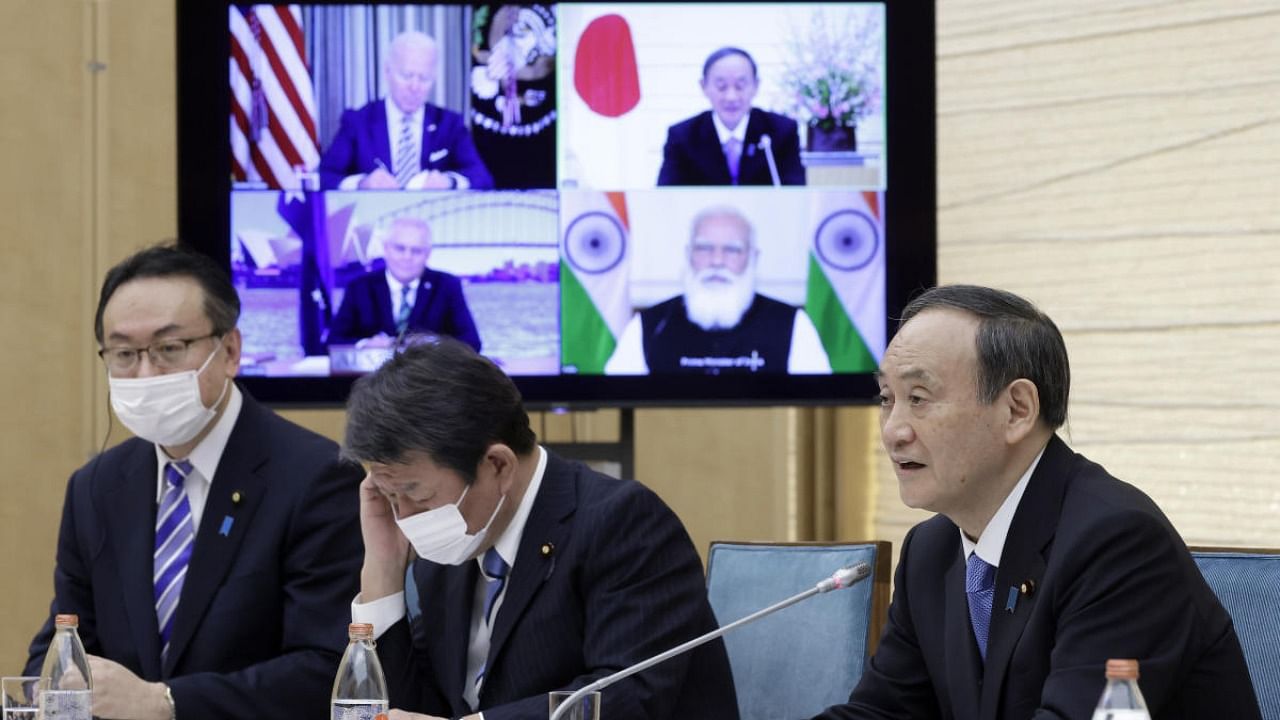
The leaders of the Quad countries – the US, India, Japan and Australia -- are set to meet for the first in-person summit of the grouping on September 24 at the White House. It will be an important step towards shaping the Quad in the face of the emerging security architecture in the Indo-Pacific. This follows the March meeting of Quad leaders that led to formation of working groups on vaccine and climate change.
There has been a degree of uncertainty over the Quad as it does not want to be viewed as a NATO-like alliance. All the Quad partners have witnessed a tumultuous couple of years in their relationship with a bellicose China. Due to its economic and military position, engagement with China has demanded delicate balancing and hasn’t been without fissures that caused instability in the Indo-Pacific.
The US and Quad Partners
The Trump administration, disillusioned with the US’ alliances, presented challenges to allies eastwards and planted scepticism in bilateral relations. Disagreements over tackling China in East Asia have led Tokyo to choose ‘duality’ in its ‘free and open Indo-Pacific’ strategy so as to not overtly confront Beijing, especially in areas of economic and non-traditional security, while still upholding principles of the US-led liberal order in the region. Since the Biden administration has dubbed US alliances as its greatest assets, this summit is likely to bring reassurances for Japan.
The US-Australia relationship has been characterised by doubt over the reliability of the US’ ‘extended nuclear deterrence’, the asymmetric nature of the partnership, and Canberra’s inability to accurately comprehend domestic American politics. However, a striking development has occurred with AUKUS, the recently announced Australia-UK-US pact, which largely allays any suspicion about Australian loyalties. A summit right after the announcement of AUKUS will need to clarify the roles Australia and the US will assume in the Quad.
India is a ‘strategic partner’ of the US and not a military ally. Unlike Japan and Australia, India is a nuclear power and relies on its own military capabilities. While that has allowed India to exercise autonomy and foster ‘multi-alignment’, it has also heightened insecurities. Sameer Lalwani, a Senior Fellow at Stimson Center, argues that India’s multi-alignment policy strengthens its regional position and even motivates Southeast Asian nations to resist China’s advances without having to be a secondary partner in a formal US alliance system. Attempting to pressure India through CAATSA over the purchase of the Russian S-400 air defence system can seriously undermine American reliability for New Delhi. The summit offers an opportunity for clear and transparent dialogue on the course of the India-US relationship.
Issues of the Indo-Pacific
China’s grey-zone activities – coercive actions short of war -- have caused serious concern among the Quad partners. Beijing’s economic sanctions against Australia, the continuous aggressive posturing in East China Sea over the Senkaku islands dispute with Japan, and a violent stand-off with Indian troops in the Galwan Valley of Ladakh are all grey-zone tactics employed by Beijing. In the past 10 years, China has carried out 152 cases of grey-zone operations on 27 countries and the EU, including cyber intrusions.
It would be surprising if the Quad summit fails to bring these grey-zone operations into focus and strategise at least a precursor to a response. The Quad’s actions can potentially encourage Southeast Asian nations in charting out similar strategies to deal with Chinese harassment in the South China Sea. ‘The Spirit of the Quad’ highlighted ASEAN centrality in the Indo-Pacific; this Quad summit must delve into a more granular level of working with ASEAN countries, particularly on maritime and cyber security. Given its own evolution from a ‘minilateral’, the Quad is positioned well to engage with other such groupings of the Indo-Pacific to ensure alignment of goals and avoid conflict of interest.
Beyond the summit
As newer groupings emerge with similar intent, like AUKUS, it will be important for Quad members to maintain cohesiveness for long-term impact. Open and early dialogue will be helpful in addressing friction among members to prevent losing sight of their common objectives.
Australia’s decision to acquire nuclear-powered submarines highlights the duress caused by China’s aggressive rise, which is forcing countries in the region to reassess their defence postures.
The Galwan Valley clashes prompted New Delhi to redeploy large numbers of its land forces along the border with China. It can be expected that the Indo-Pacific will be a theatre for more security arrangements as regional powers feel the heat of China’s relentless, assertive stance. The Quad may be able to lead the way in maintaining regional security if its members can share among themselves military, technological and planning expertise to be better prepared against adversarial attacks.
(The writer is a Research Analyst with the Institute for Defence Studies and Analyses, New Delhi)